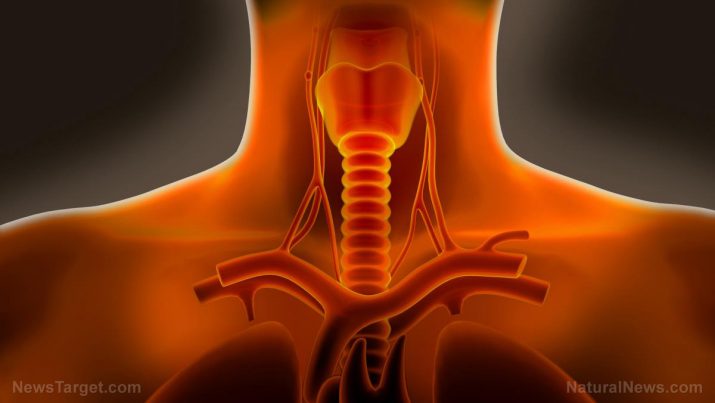
Spasmodic dysphonia – causes, side effects and treatments at NaturalPedia.com
Wednesday, July 25, 2018 by Michelle Simmons
http://www.naturalpedia.com/spasmodic-dysphonia-causes-side-effects-and-treatments-at-naturalpedia-com.html

Spasmodic dysphonia is a life-long neurological condition that affects speech. Usually, when people speak, the air that leaves their lungs is pushed between two vocal cords, which stretches from the front of the throat to the back. Air pressure causes them to vibrate in just the normal way to produce voice. However, when people with this condition speak, the muscles inside the vocal cords receive abnormal nerve signals from the brain, causing the vocal cords to vibrate uncontrollably at times. As a result, regular speech becomes hoarse and uneven.
There are three main types of spasmodic dysphonia:
- Adductor spasmodic dysphonia, the most common type, where the uncontrolled muscle spasms close and stiffen the vocal cords, making it difficult to produce sound.
- Abductor spasmodic dysphonia, where the vocal cords open too far, preventing the vocal cords from vibrating. It also lets extra air to leave the lungs while speaking. It causes the voice to sound weak. Lastly, in mixed spasmodic dysphonia, the muscles that open and close the vocal cords do not work properly.
- Spasmodic dysphonia which is a condition that’s not fully understood. However, some people with the condition seem to have a problem with their nervous system, which may cause the vocal cords to spasm. In some cases, spasmodic dysphonia may be a form of dystonia – a neurological problem affecting the muscle tone.

Known side effects of spasmodic dysphonia
The known side effects of spasmodic dysphonia include the following.
- Breaking up of the voice
- Breathy voice spasms
- Breathy, whispery, strangled, or tight voice
- Effort required to produce voice
- Failure to maintain voice
- Hoarse voice
- Intermittent voice breaks
- Jerky voice
- Tremulous voice
- Vocal tremor
Body systems harmed by spasmodic dysphonia
The body systems harmed by spasmodic dysphonia are the nervous system and the respiratory system.
List of foods or nutrients that prevent spasmodic dysphonia
There is no information on what foods or nutrients exactly prevent spasmodic dysphonia. However, there are foods that can help keep the vocal cords healthy. These include water, tasted bread, non-salted crackers, cantaloupe, apple juice, and warm herbal tea.
Treatments, management plans for spasmodic dysphonia
The goal of spasmodic dysphonia treatments is to improve the symptoms of the disorder. One of the treatment options for the condition is surgery, which involves cutting one of the nerves of the vocal fold. Another option is speech therapy. People with the condition may feel stressed as they find difficulty speaking. Counseling, support groups, and devices that aid in communication may help them.
Where to learn more
- Folic Acid May Prevent Cancer of Larynx (press release)
- Consuming more than 5 alcoholic drinks per week increases your risk of oral cancer: Analysis
- Facts on Speech and Language Problems Observed in Kids
- Could your psychiatric drug cause tardive dyskinesia (TD)?
- Herbs.news
Summary
Spasmodic dysphonia is a life-long neurological condition that affects speech.
Spasmodic dysphonia has three main types: adductor spasmodic dysphonia, abductor spasmodic dysphonia, and mixed spasmodic dysphonia.
Spasmodic dysphonia generally causes muscle spasms inside the vocal chords, strained speech, hoarse voice, and difficulty in speaking or producing voice.
Spasmodic dysphonia can be treated with surgery, speech therapy, counseling, support groups, and devices that aid in communication.
Sources include:
Tagged Under: Tags: Spasmodic dysphonia





